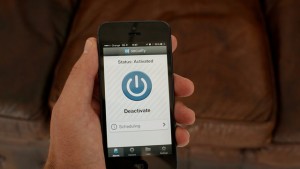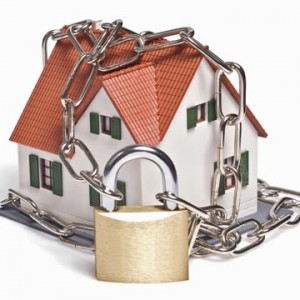For those who own alarm systems, whether they are video surveillance, access control, burglary, or fire protection, our systems watch over us and protect us around the clock.
But in today’s day and age, just about everything is connected to the internet. In many cases, this includes our alarm system. And like any device that is connected to the internet, if not taken care of properly, it can be at risk of attack from hackers. With the upcoming launch of 5G, it is extremely important this year to protect anything connected to your home network.
“Attackers used an army of hijacked security cameras and video recorders to launch several massive internet attacks” said a news piece by the Wall Street Journal. Many times, these cameras were infected by pre-compromised routers that already existed.
Here are some tips about how to protect your alarm system as well
Router security: We recommend using WPA2 security for your router. Most routers, unless they are fairly old, are capable of this type of security. For more information on this, check out your router’s brand’s website – Belkin, Linksys, and Netgear are common brands.
Firmware updates: It is very important that any device that connects to the internet, from thermostats to alarm systems to routers to televisions to computers, always has the most up to date firmware. Each device’s manual or website will have instructions on how to do those, and if there is a phone application that interfaces with the device, you can often do it through the application.
Password protection: Many devices come with generic user names and passwords. These are easy targets for hackers. Make sure you change any default passwords, and try not to use the same password on multiple devices. It is most important that this is done on the router.
New hardware: According to Kenneth White, a security researcher and director of the Open Crypto Audit Project, “If the company that made your [device] isn’t selling that model anymore or offering security updates, that’s a good sign for you to throw it in the trash.”



 In the wake of home automation, smart home, or connected home technology you may have come across the term Z-Wave technology. What is it?
In the wake of home automation, smart home, or connected home technology you may have come across the term Z-Wave technology. What is it? 
 The images above show the difference between a parking garage being monitored by a camera with no WDR or WDR turned off on the left, and on the right the same area monitored by a camera with WDR enabled. The difference is clear as day. Why do they differ so much? The camera with the WDR enabled has two internal Charge-Coupled Devices (CCD). The two devices, or sensors, scan an image at different speeds, one low and one high, the image processor then combines the separate images producing a clearer, more balanced picture with better contrast and lighting. This process happens quickly enough to produce a stream of clear recorded footage. There are many different manufacturers that produce these WDR cameras in the market today, and not all of them use the same type of sensor and image processing combinations. The best way to ensure you are getting the best camera for your specific application is to hire a licensed security systems integrator who is educated in which camera specifications will work best in variant conditions.
The images above show the difference between a parking garage being monitored by a camera with no WDR or WDR turned off on the left, and on the right the same area monitored by a camera with WDR enabled. The difference is clear as day. Why do they differ so much? The camera with the WDR enabled has two internal Charge-Coupled Devices (CCD). The two devices, or sensors, scan an image at different speeds, one low and one high, the image processor then combines the separate images producing a clearer, more balanced picture with better contrast and lighting. This process happens quickly enough to produce a stream of clear recorded footage. There are many different manufacturers that produce these WDR cameras in the market today, and not all of them use the same type of sensor and image processing combinations. The best way to ensure you are getting the best camera for your specific application is to hire a licensed security systems integrator who is educated in which camera specifications will work best in variant conditions.
 The world is an exciting, adventure-filled environment we all share. Even with all of the amazing opportunities it has to offer, the sad fact remains that there are inevitable and unavoidable dangers. We would all like to think our homes are impervious fortresses of safety, when in reality life is unpredictable, and most are unaware or don’t want to believe they are vulnerable in their own home. However, you can take preventative measures to significantly decrease your chances of disaster. Our homes are where our lives happen, what better reason to protect them? By installing a comprehensive custom security system, you would not only be protecting the physical structure of your home, but most importantly the welfare of your family. No one understands this better than our team of experts at
The world is an exciting, adventure-filled environment we all share. Even with all of the amazing opportunities it has to offer, the sad fact remains that there are inevitable and unavoidable dangers. We would all like to think our homes are impervious fortresses of safety, when in reality life is unpredictable, and most are unaware or don’t want to believe they are vulnerable in their own home. However, you can take preventative measures to significantly decrease your chances of disaster. Our homes are where our lives happen, what better reason to protect them? By installing a comprehensive custom security system, you would not only be protecting the physical structure of your home, but most importantly the welfare of your family. No one understands this better than our team of experts at 

